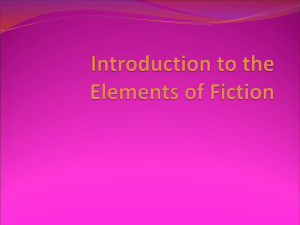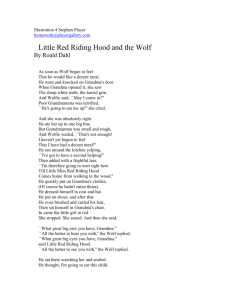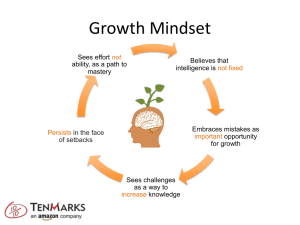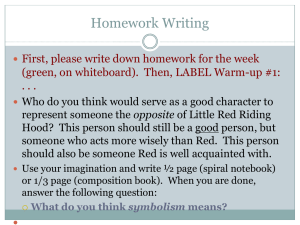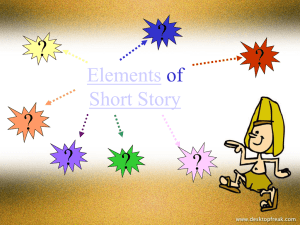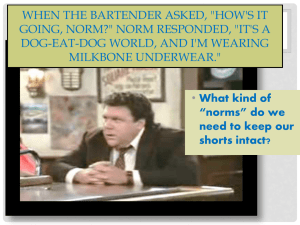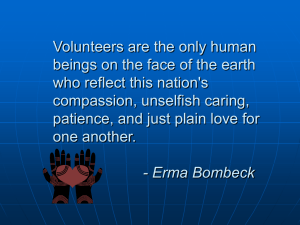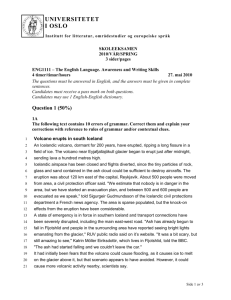RL 1 Cite several pieces of textual evidence to support inferences
advertisement
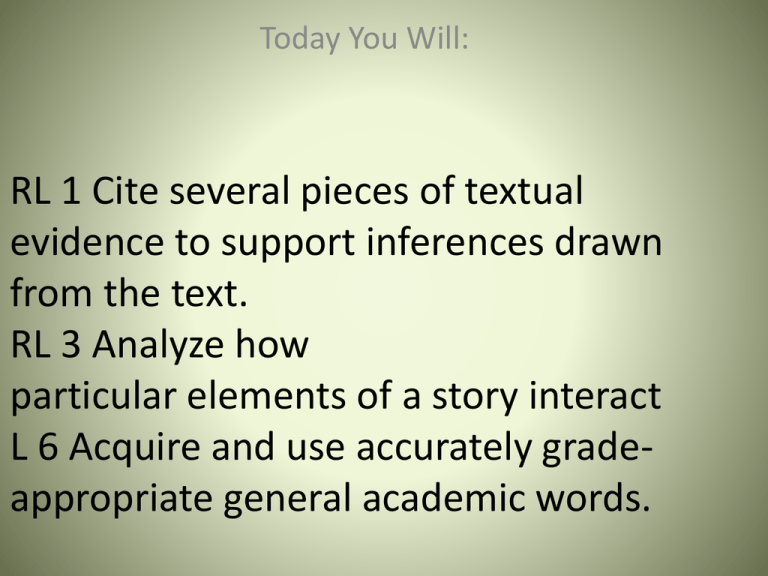
Today You Will: RL 1 Cite several pieces of textual evidence to support inferences drawn from the text. RL 3 Analyze how particular elements of a story interact L 6 Acquire and use accurately gradeappropriate general academic words. Today You Will: 1)Analyze the Big Question, “Who sees the BEST in you?” 2)Take notes on: protagonist, antagonist, external conflict, internal conflict, plot development, and making inferences 3)Listen to Little Red Riding Hood then analyze it using our notes 4) Study Vocabulary before you read “Thank You Ma’am” Who sees the BEST in you? Have you ever gone through a time when it seemed like you couldn’t do anything right? If so, then you know how important it is to have someone have faith in you. When a friend, a family member, or a teacher believes you can do better, it can help you try harder instead of giving up. They may see potential, where others might see a problem. Quickwrite: Create a web of people you know who see the best in you. Then explain why you have included these people. In what ways do they show their belief in you? Who Sees My Best Potential? Terms to Know The main character that has a conflict to solve Terms to Know The character that causes the main conflict for the protagonist Terms to Know External Conflict-is a character’s struggle against an outside force. For example, a character may struggle against nature or against another character. Terms to Know Internal conflict--takes place inside the character. For example, a character may struggle between wanting something and knowing that taking it is wrong. Terms to Know Inference --intelligent guess about something based on information you already have about it. http://tx.english-ch.com/teacher/jocelyn/level-b/inference/ Listen to one version of Little Red Riding Hood. As you listen, complete the following inference chart: Detail About Character What I Infer Ex. Red takes food to her Grandma who lives on the other side of the forest. Red must really love her Grandma to risk walking through the dark forest alone. Review the chart you created as you listened. Use the inferences you made to answer the following question: • Why does the antagonist treat the protagonist the way he does? Think of many different possible reasons. Give details from the story to support your answer. Use good 7th grade words to support your answers: the author stated…so I know… ….because the text says... I can conclude… For instance, the author used the words… From the reading I know that… …An example of this is when the text said… Identify the Conflict in the Plot • Using a chart like the one shown, go back through the story and record examples of internal and external conflict. Conflict Red has to decide if she should trust the wolf in the forest. Internal External x x x Which conflict set the plot in motion? Big Question: Who sees the BEST in you? Is it possible for someone you have just met to see the best potential in you? Make connections to Little Red Riding Hood. How would you rewrite this story with this big question in mind? Vocabulary Study WORD QUESTIONING Directions: As your teacher reads each sentence, listen for the boldfaced word. On a separate sheet of paper, work together to create a word map for the word like the one shown. Fill in as much information as you can. A. By bringing in loads of dirt and working many hours they transformed the barren lot into a beautiful flourishing garden. When I saw the woman’s muscular arms and tree-trunk legs I knew that she was anything but frail. He had failed me before so it was easy to mistrust him this time too. To look presentable for the first day of school the young boy brushed his hair and washed his face. B. Directions: Based on your discussion of the boldfaced words and the big question for “Thank You, M’am,” explain how the boldfaced words might fit into an essay about potential. __________________________________ __________________________________ __________________________________ __________________________________ __________________________________
